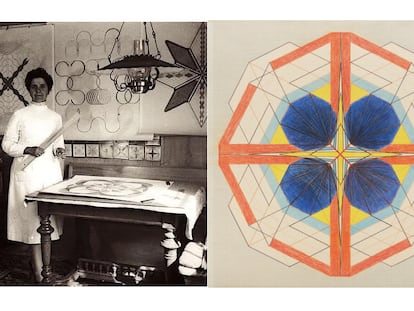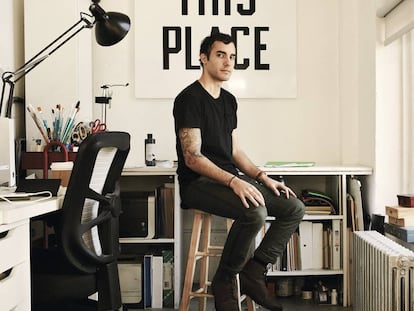Françoise Mouly, the woman behind ‘The New Yorker’ covers
The art director of the magazine has been selecting images that reflect the changes in the world for more than three decades
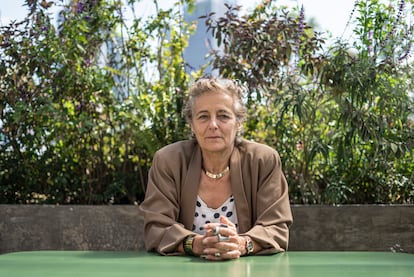

On September 11, 2001, Françoise Mouly, art director of The New Yorker, was at her home in SoHo when she heard about the first plane that had hit the Twin Towers of the World Trade Center. After she and her husband, acclaimed cartoonist Art Spiegelman (creator of Maus), retrieved their two young children from school and the family was safe, she went straight to the magazine’s headquarters. David Remnick, the chief editor, had summoned her to release a special edition.
That cover, depicting the silhouettes of the Twin Towers against a darkened background, is part of journalism history as well as one of the most famous images ever published by The New Yorker: a perfect combination of design, subtlety and timeliness that changed the tone of the magazine. Without using images or words, Mouly knew how to convey what millions of people felt on that fateful day. How to say what could not be said. “The idea of having to go to the office and to even think about looking for an image seemed obscene. In a conversation with my husband, he suggested the silhouettes. So when I drew the silhouette black on black, I realized like, oh, it is a way of saying no image exists and it’s an anti-image while still being an image. It’s so fugitive, subtle, and you couldn’t do that in words,” she tells EL PAÍS.
Mouly is a tall, blue-eyed woman. Her hair is short and curly, held back by the glasses she wears to see up close, and her fingers are covered in rings. One of them is a huge eye that follows the conversation from her index finger, as if looking through a keyhole. She was born in Paris 66 years ago, but she has lived in New York for more than half her life and alternates her work at the magazine with that of her role as editorial director of the children’s comics publisher Toon Books. Between 1980 and 1991, together with Spiegelman, she edited the comics anthology magazine Raw, a cult publication that marked an important milestone for the industry in New York. This summer she was in Mexico as part of the jury of a design biennial held by the company Pictoline to choose the best illustrators in Latin America.

In the almost three decades that she has been in charge of the cover of The New Yorker, Mouly has seen her country - she is also an American citizen - and the world change hundreds of times, and she has been there to provide the necessary ingenuity, sharpness or sensitivity to tell the story with a singular style. She admits that the most daunting challenge is capturing the essence of a historical moment in a unique way by choosing the right illustration. “Emotions cannot be created, but we can give people an image to identify with,” she explains. When Barack Obama won the elections in 2008, the cover created by Bob Staake featured the Lincoln Memorial in Washington - which also evokes Martin Luther King - under a huge bright moon that was also the “O” in the header. “It captured the emotion of everybody, because it gave a sense of being historic, a new era,” she says.
In November 2016, after Donald Trump’s victory, the cover instead depicted a scene in the Manhattan subway, where a man was reading the newspaper. Its pages said: “Oh, sweet Jesus. Please God, no. Anything but that.” “We tend to give an adult explanation to everything. But emotionally, you are more connected to your visual sense, it’s connected to your gut [...] you are using your own emotional circuitry,” says Mouly, who has been able to exploit this non-verbal communication to discuss racism, feminism, wars, abuses and radicalization while shedding light on the darkest side of American society. Illustration “gives you a conduit for processing the pain or the empathy with the people,” she points out.
Mouly emphasizes that a good cover does not necessarily have to be related to an article on the inside pages. “The cover is a story in itself, which must be understood in ten days or ten years,” she explains. Her office - located on the 23rd floor of One World Trade Center, where the Twin Towers used to be - is considered the most creative one in the magazine’s headquarters. Resembling a gallery, hundreds of illustrations hang on the walls, displaying the constant dialogue that Mouly maintains with the artists to create the covers.
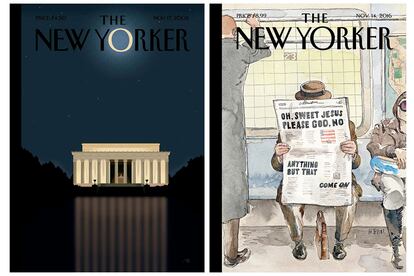
For many artists, being published in The New Yorker is a reward in itself. The art director admits that every week she discards “tons” of illustrations that arrive at her office; without a doubt, she says, the hardest part of her job. But she is a very demanding and meticulous woman. So much so, that a group of checkers works with her just for the cover illustrations. Still, things sometimes slip through, as it did when the clock in a picture of Grand Central Station showed the time as 2.15pm and a reader pointed out that it was impossible for the amount of light coming through the windows and the shadows that were projected on the ground to correspond to that time of day, or when another reader wrote to let them know that one of the characters in a beach scene had two left feet. “The readers are experts and they decode everything. It is now up to all of us to rise to the challenge.”
Mouly considers it important to pay attention to the work of established authors, but also to promote that of new artists beyond the United States and Europe; she is always looking for new talent and encourages young illustrators to submit their work. She is interested in showing the changes in our society, what it is like to be alive in this time. Since its foundation in 1925, this has been one of the fundamental pillars of the publication.
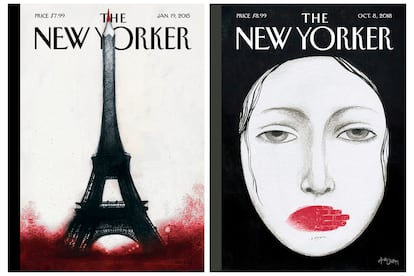
During the interview, Mouly talks about the intolerance that prevails in the United States, and how that intolerance has caused the work of artists and writers (including her husband) to be censored. “Unfortunately, this is part of a very well-organized political effort from very rich people who have found a way to impose their beliefs,” she says. In her view of American society, she also denounces puritanism, sexism and the demands that are placed on women.
Then the topic returns to 9/11, and she recalls how at first she told David Remnick that that cover with the two black silhouettes had been the work of her husband. After all, the idea had come from a conversation with him and she was worried that the director would not accept her suggestion, not being a recognized artist. In addition, never before had two illustrators worked on a cover together until she broke the rule (months later she gave a double credit to Rick Meyerowitz and Maira Kalman, setting a new precedent in the history of the publication).
She reflects that although the prevalence of sexism is decreasing in the 21st century, had she been a man, she would have been given more authority much earlier. However, “if I wasn’t a woman, I probably would have been more autocratic in my exercise of power, and therefore less successful, I think.”
Tu suscripción se está usando en otro dispositivo
¿Quieres añadir otro usuario a tu suscripción?
Si continúas leyendo en este dispositivo, no se podrá leer en el otro.
FlechaTu suscripción se está usando en otro dispositivo y solo puedes acceder a EL PAÍS desde un dispositivo a la vez.
Si quieres compartir tu cuenta, cambia tu suscripción a la modalidad Premium, así podrás añadir otro usuario. Cada uno accederá con su propia cuenta de email, lo que os permitirá personalizar vuestra experiencia en EL PAÍS.
¿Tienes una suscripción de empresa? Accede aquí para contratar más cuentas.
En el caso de no saber quién está usando tu cuenta, te recomendamos cambiar tu contraseña aquí.
Si decides continuar compartiendo tu cuenta, este mensaje se mostrará en tu dispositivo y en el de la otra persona que está usando tu cuenta de forma indefinida, afectando a tu experiencia de lectura. Puedes consultar aquí los términos y condiciones de la suscripción digital.
